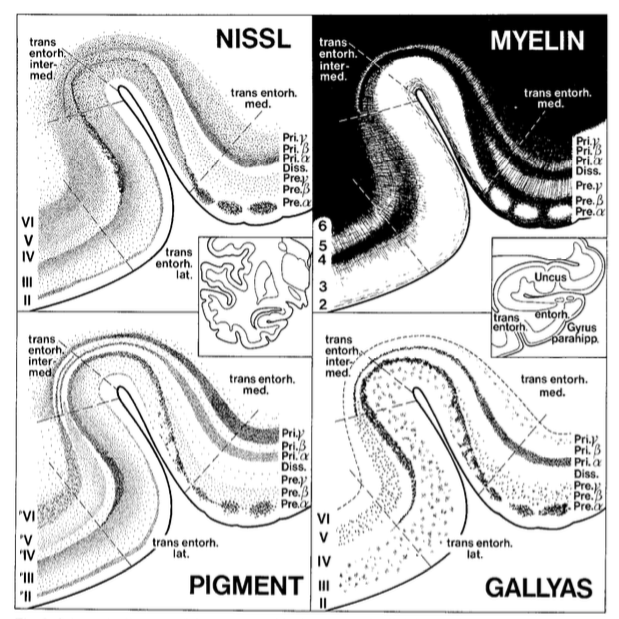
Happy #SubfieldWednesday! Today we will be sharing a 🧵 on anatomical variability in the medial temporal lobe (MTL). MTL subregions vary in size and shape across individuals & these variations can make landmark identification and segmentation difficult
#SubfieldWednesday (1/n)
#SubfieldWednesday (1/n)
Today we will focus on the *most* consistent structure in the MTL: the hippocampal body. Most of our followers will be familiar with this canonical hippocampal body shape shown below in the coronal plane.
#SubfieldWednesday (2/n)
#SubfieldWednesday (2/n)

The shape is characterized by a consistent “C-shape” when viewed in the coronal plane. The C is formed by the cornu ammonus (CA) subfield on the lateral part of the hippocampal body.
#SubfieldWednesday (3/n)
#SubfieldWednesday (3/n)
A variation that is observed in healthy individuals is a more "narrow" or round-shape of the hippocampal body in the coronal plane. This variant is referred to as “malrotation” or “incomplete hippocampal inversion.”
frontiersin.org/articles/10.33…
#SubfieldWednesday (5/n)
frontiersin.org/articles/10.33…
#SubfieldWednesday (5/n)
Malrotation occurs more often in the left hemisphere than in the right, and it is usually accompanied by a very deep and vertically-oriented collateral sulcus (see below for examples).
#SubfieldWednesday (6/n)
#SubfieldWednesday (6/n)

@RosenbaumLab, @rosanna_olsen, Fuqiang Gao and colleagues reported a case of hippocampal amnesia with malrotation in both hemispheres in 2014: dx.doi.org/10.1016/j.neur…
#SubfieldWednesday (7/n)
#SubfieldWednesday (7/n)

In summary, the length of the hippocampal body in the vertical (sup/inf) and horizontal (med/lat) dimensions can vary across subjects (and across slices within a subject). Thus, subfield boundary definitions need to take these variations into account.
#SubfieldWednesday (8/n)
#SubfieldWednesday (8/n)
The Hippocampal Subfield Group has considered these variations when developing our harmonized protocol, so that the subfield boundaries are both valid and reliable across these anatomical variations.
#SubfieldWednesday (9/n)
#SubfieldWednesday (9/n)
Next week we will talk about anatomical variability in the hippocampal head—which is more prevalent than variations in the hippocampal body. See Ding & Van Hoesen, The Journal of Comparative Neurology, 2015 for a sneak preview!
#SubfieldWednesday (end)
#SubfieldWednesday (end)
• • •
Missing some Tweet in this thread? You can try to
force a refresh












